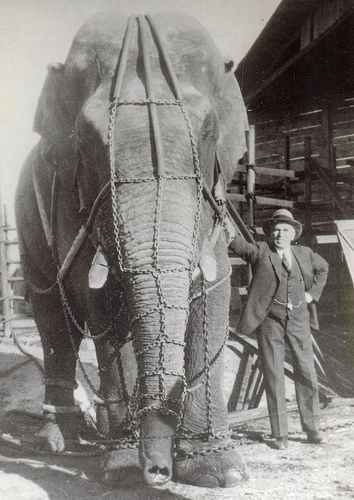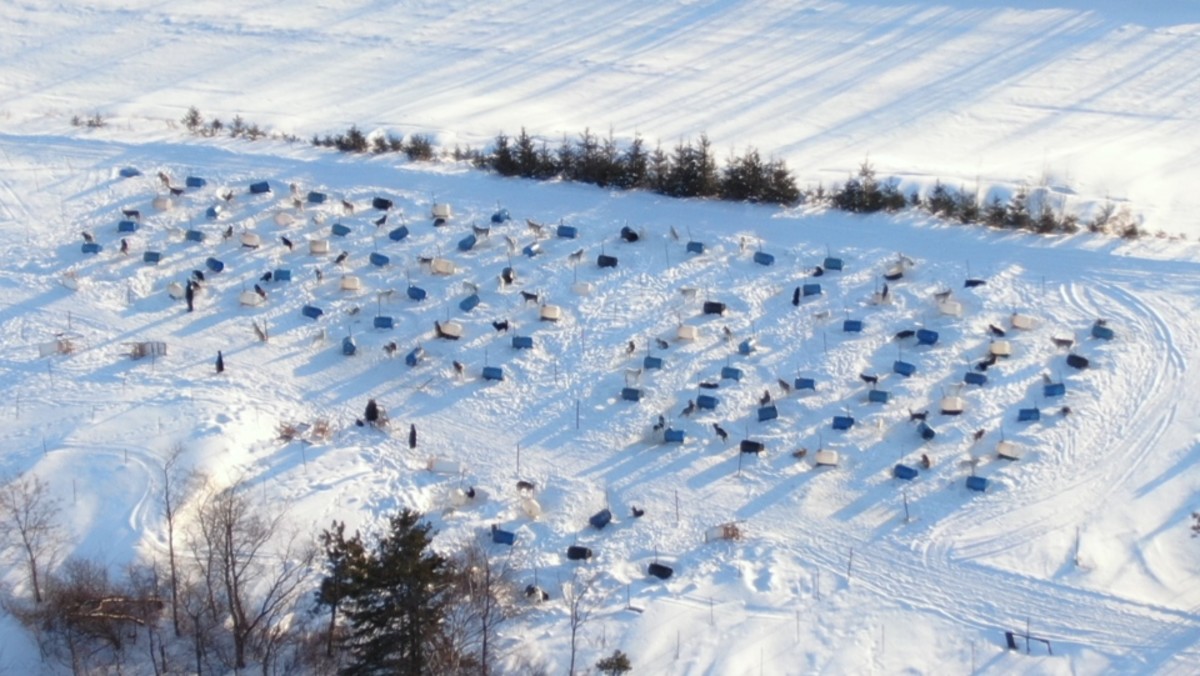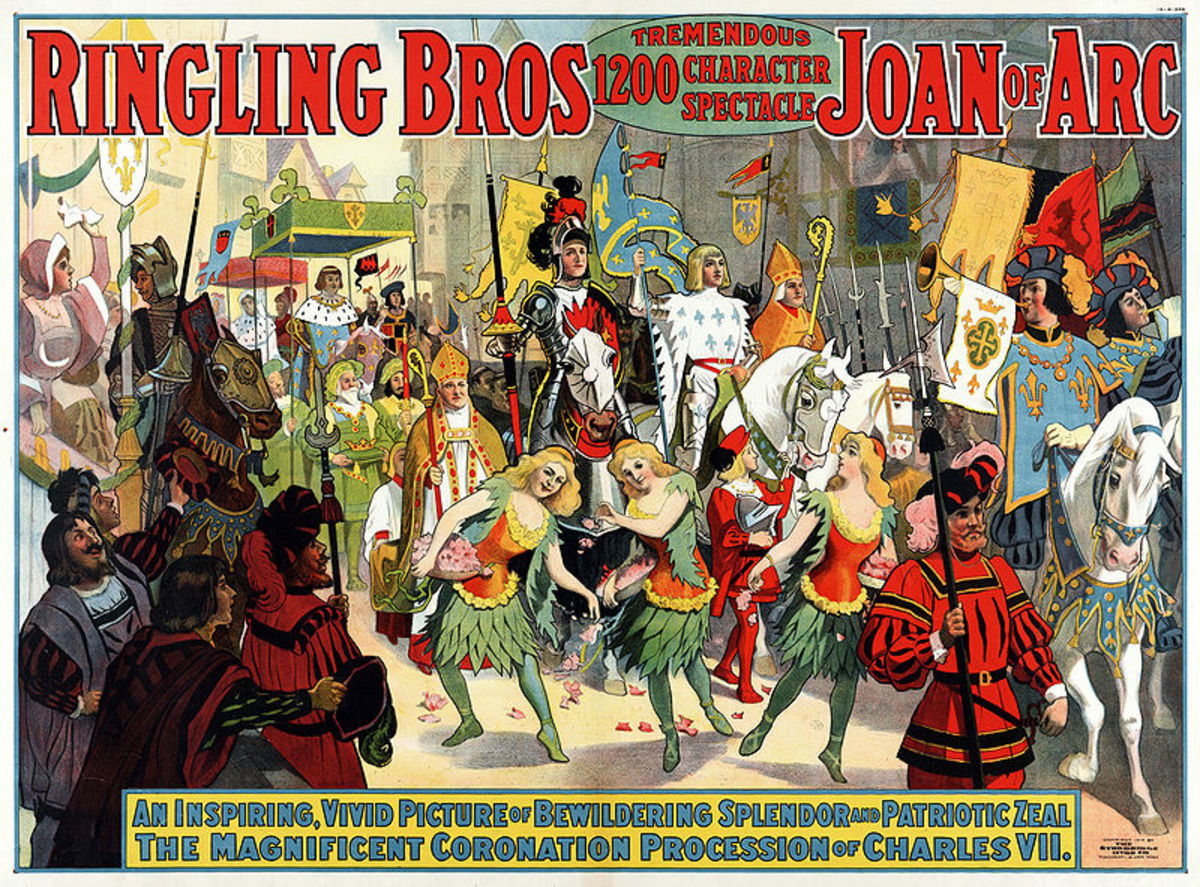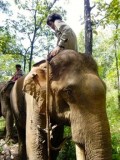Elephant Chains

Tusko the elephant was described as the meanest and largest elephant in the US. If honestly measured he was not the largest, but a case could be made that he was the most dangerous. Note the chains attaching his tusks to his legs. Tusko's reputation as a killer became a part of his draw for the circus. After the original Tusko died his name was used for several 'successors'.
Dangerous Circus Elephants
In the early days of circuses, elephants were an essential attraction for the show. Circuses kept elephants that were known to be dangerous: males, and elephants caught from the wild as adults.
Elephant bulls go through a reproductive state called musth when they become aggressive and unpredictable, and dangerous even to their normal trainers and handlers. Even when they killed many people elephants were too valuable to kill or surrender.
Elephants as Circus Equipment
These elephants not only took part in shows but also parades through the town to draw the crowds to the tent. Circuses would also lend out their elephants to construction and agricultural jobs in the winter season. As such, elephants had a lot of access to people.

Elephant Chains
Elephant chains were developed to reduce the risk presented by elephants of uncertain temperament being moved outside of an enclosure or tether, The chains used a range of techniques. and soon the most dangerous elephants were distinguished by the amazing weight and complexity of their chains.
Chain is used not only because it is heavy and very strong, but also because it is smooth and does not abrade the elephant's skin.

Restricting Movement
Elephant chains would restrict movement by connecting body parts. For example legs together and tusks to front legs. Chains would often be wrapped around the trunk to prevent the elephant reaching out and grabbing people.
In the early part of the 20th century some touring elephants had killed multiple people. however their value as a crowd-drawer would mean circuses continued to tour with these animals.
Weights
A second effect of chains was that the sheer weight would slow the elephants movement and prevent it from bolting. this included not only the chains on the body but long length of chain that the elephants would drag behind it.

Chain links were used not only because they were strong, but the links are smooth and will not abrade the skin, unlike rope.
Today
Elephant chains are no longer in use today. Modern circuses keep ale elephants in the circus's permanent home location and tour with the far less dangerous females.
Some circuses still use a leg tether to restrain the traveling elephants, but others create indoor fenced enclosures where the elephants are kept in groups with the ability to move around freely.
Leg and drag chains are still sometimes used with semi-domesticated working elephants in Asia.
There are ongoing campaigns to end the remaining used of chain tether with elephants such as with temple elephants in Sri Lanka.






